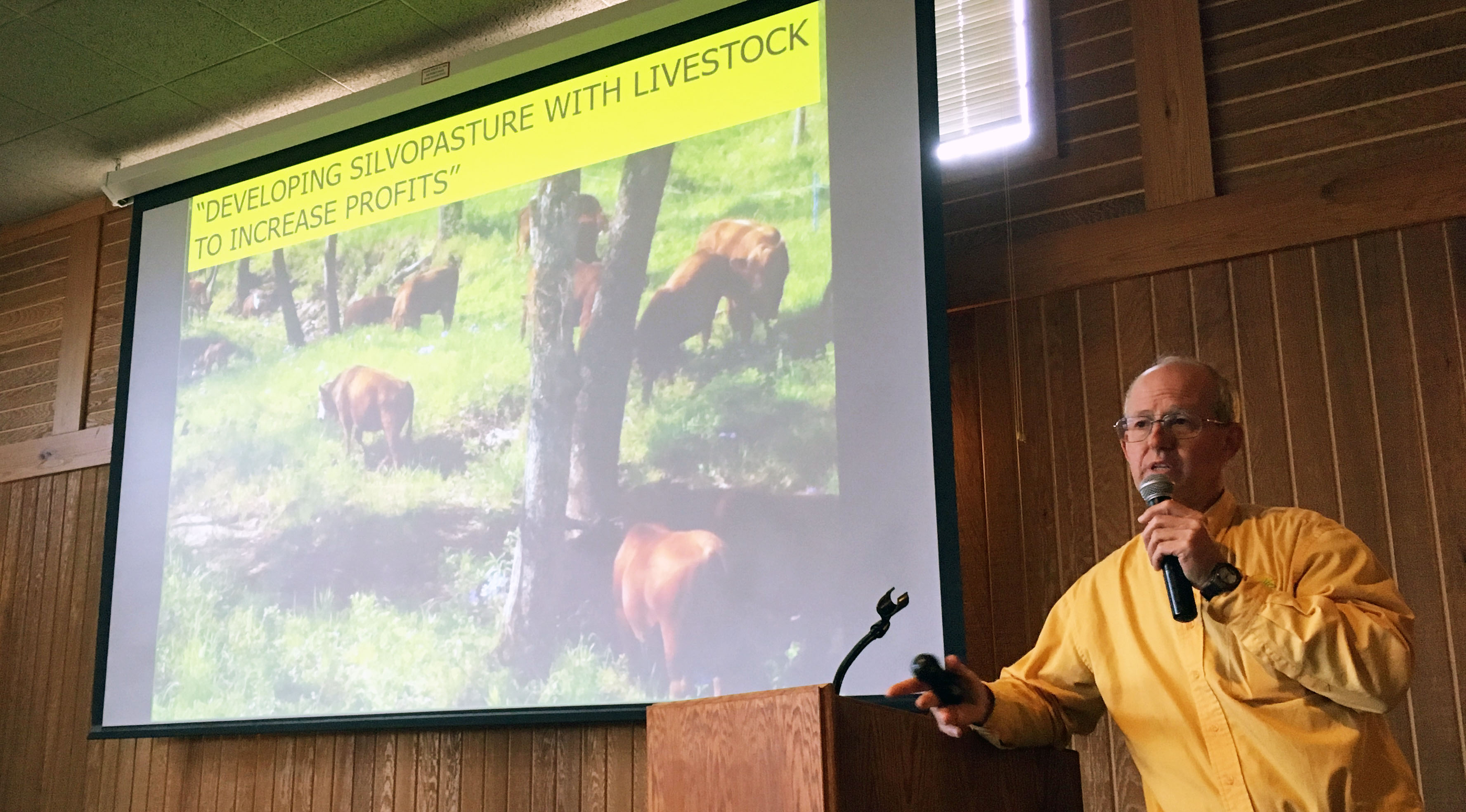The removal of livestock from a pasture during the tree establishment phase may not be a requirement for the successful integration of trees into a pasture. While a multitude of factors influence tree survival, field-trial research projects at Virginia Tech’s Shenandoah Valley Agricultural Research and Extension Center suggests that newly-planted trees can be protected from livestock that would otherwise destroy them.
A demonstration silvopasture project on this farm aims to show how a degraded hardwood stand on a medium quality site might be converted into a mixed-use forage, livestock and timber-producing system. In this case, the silvopasture was developed by thinning an unmanaged timber stand full of invasive species (primarily bush honeysuckle (Lonicera spp.)). Green ash (Fraxinus pennsylvanica) was the dominant tree species in the stand. Unfortunately, the emerald ash borer found and decimated these trees, and they had to be removed, leaving the resulting silvopasture with too few trees.
-
Details
-
Written by Gabriel Pent, Adam Downing, and John Fike, Virginia Tech
Read more ...
Inhabit Earth’s (http://inhabit.earth) mission is global climate stabilization. There is emerging research that indicates that most agroforestry systems perform better than natural forests in sequestering carbon. This is well documented in seminal works such as The Carbon Farming Solution and Project Drawdown.
We have been applying innovative approaches that leverage urban forests to address complex ecosocial challenges and begin to stabilize climate. The innovation lies in integrating and extending various fields of practice, such as agroforestry, regional planning, urban agriculture, landscape architecture, permaculture, and economic development.
-
Details
-
Written by Mario M. Yanez, Inhabit Earth
Read more ...






